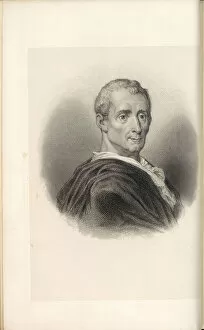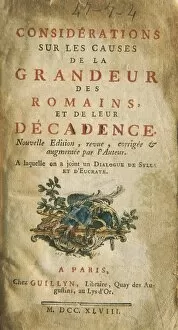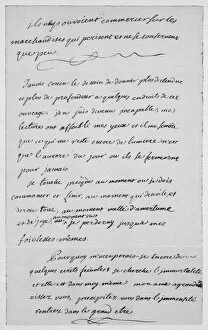Secondat Collection
Charles-Louis de Secondat, baron de Montesquieu (1689-1755), was a renowned French philosopher and thinker
All Professionally Made to Order for Quick Shipping
Charles-Louis de Secondat, baron de Montesquieu (1689-1755), was a renowned French philosopher and thinker. His ideas on political theory and the separation of powers greatly influenced the development of modern democratic systems. This collection of portraits showcases the various depictions of Montesquieu throughout history. From an 1830 portrait by an unknown creator to a 1889 rendition, these images capture his intellectual presence and distinguished appearance. Montesquieu's most famous work, "The Spirit of Laws, " explored the principles behind different forms of government and advocated for a system where power is divided among separate branches. This concept became fundamental in shaping constitutional democracies worldwide. As we delve into these captivating portrayals, it becomes evident that Montesquieu's legacy extends far beyond his lifetime. Artists like J Cook and anonymous creators immortalized him through their artistry, ensuring that future generations would remember this influential figure. Montesquieu's contributions continue to resonate today as societies strive for balance between authority and freedom. His ideas remain relevant in discussions surrounding governance, human rights, and justice. In remembering Charles de Secondat, Baron de Montesquieu, we honor not only his intellect but also his enduring impact on our understanding of politics and society.


















